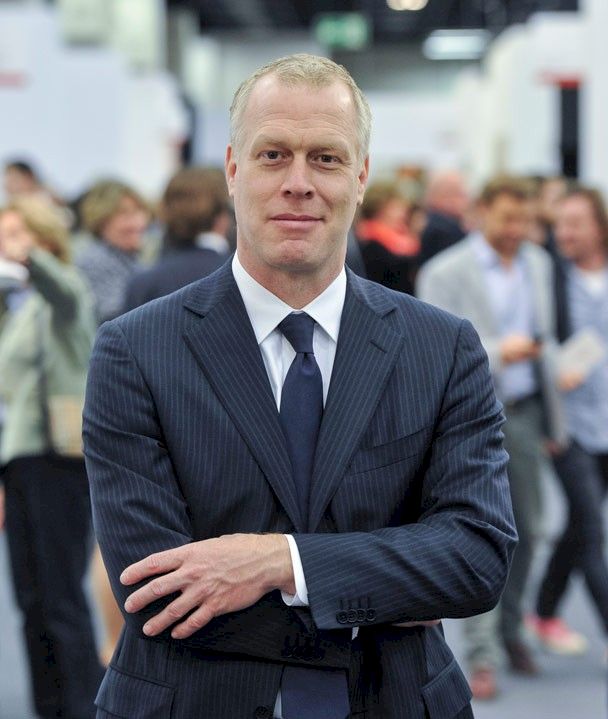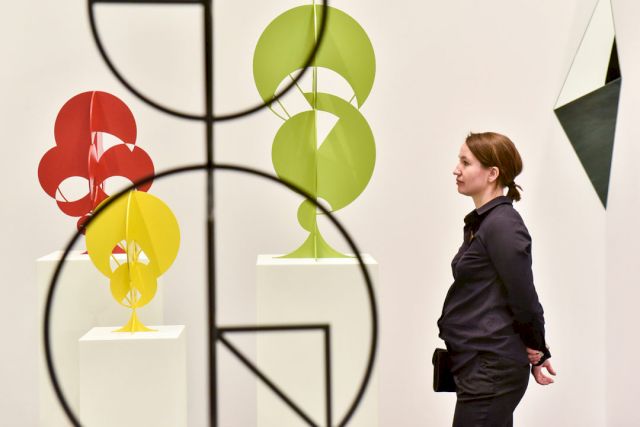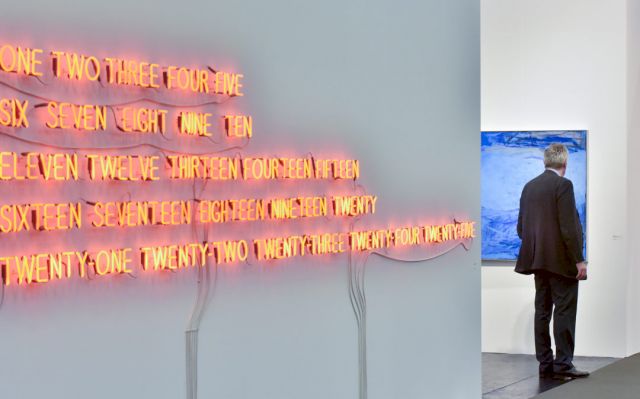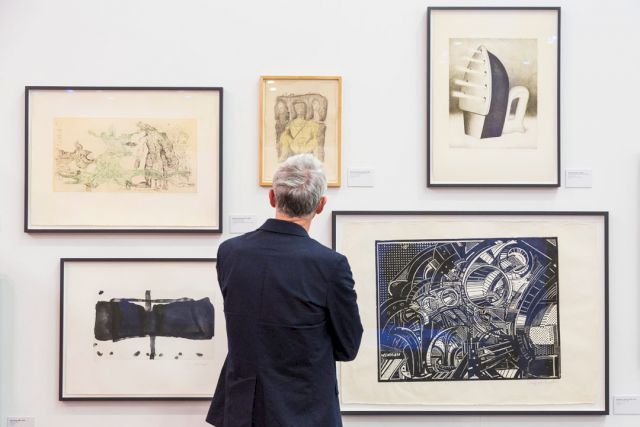BMW Art Guide by Independent Collectors
Daniel Hug
Fair Director at Art Cologne

Tell us a little bit about the history of the fair.
The origins of today's Art Cologne as a trade fair for classic modern art, post-war art and contemporary art go back to the year 1967. Kunstmarkt Köln ’67 was launched on 15 September 1967 in a historic Cologne building – the Gürzenich. The launch of the Kunstmarkt Köln ’67 was to have a profound impact on the international art market. The founders of the new fair were Cologne-based gallerists – Hein Stünke and Rudolf Zwirner. To promote young German artists and galleries and to open up a new collector's magazine, to make international art accessible to German collectors at the same time, with these ambitious goals, gallery owners Hein Stünke and Rudolf Zwirner took the risk to initiate the first sales fair for contemporary art.
Art Cologne, officially known as a trade fair since 1984, is one of the most successful and prestigious art fairs worldwide. Based on the credo of its founders, the focus of Art Cologne is on progressive art. In Cologne, contemporary positions can be contrasted with the avant-garde of classical modernism and with this range of products, the trade fair was able to cope with all fluctuations in the market and with growing international competition.
Naturally, the Art Cologne has also experienced ups and downs: after economically difficult times in the 1970s, its position as the unchallenged most important art fair in the world in the mid-1980s, its decline in significance through the rise of Art Basel to its redefinition in a reunified Germany are just a few to name. The show was the first to include performance art in its portfolio, which established its own sector for young artists and introduced a section for young galleries a few years later. In 1992, Art Cologne was confronted with a satellite exhibition but didn’t effect the fair too much because in 1995, Art Cologne, Europe's biggest art fair, was in every way a fair of superlatives – in terms of the number of exhibitors, attendance figures and the length of its run.
If one is looking for a reason for the continued success of the fair, it is not least their proximity to the locality – the Rhineland gives the fair its foundation. A unique collection of collectors, numerous renowned art and cultural institutions and the proximity to the Benelux countries make Cologne the most important trading place for art in Germany and Central Europe. Even though approximately half of Art Cologne participants come from abroad, the exhibition has never lost sight of its original goal: the professional presentation of national and international art in a specific region. Art Cologne was and still is the mirror of the entire German art market, whilst at the same time, it provides access to international galleries for collectors, curators and museum directors from Germany and the region. Until last year, we have always focused on the fact that it is the oldest art fair and its historical significance, however from now on, we will focus on now and the future, being more experimental and emphasizing the importance of young galleries as well.


How do you, as fair director, ensure that the event stays contemporary and current in the fast-paced world that is the art market?
We have a long history of introducing new sectors and sections to the fair, such as smaller booths for young galleries and also the concept of collaborating with another fair and offering booths which could be shared by two or more galleries were changes that actually turned out to be successful. Through such concerted efforts to experiment and tailor booths to the needs of galleries we have managed to attract a stellar list of the rising new guard of international galleries again. I think, you always have to observe the art market, see how the developments correspond to the aims of the fair and then decide if changes are necessary or not.
Is there something in this year’s program that you are particularly looking forward to?
I’m really looking forward to our project with Michael Riedel. His large-scale installation “L”, which he created for thi year’s Art Cologne, will be shown at the South entrance of fair. We also invited Dataa Editions to curate this year’s special exhibition “Film Cologne” with a great selection of moving images works. I’m also looking forward to galleries such as Le Minotaure and Zlotowski from Paris who join Thole Rotermund from Frankfurt and Gallery Derda, Berlin. They are all new this year and are focused on Modern and Post-war works.
What do the artworks being presented at this year's fair reveal about the current trends and market?
We have pretty much all segments covered at Art Cologne – from the big Blue Chip galleries, established Contemporary, Modern and Post-war Art, and now with “NEUMARKT” we also will present a good 60 to 70 galleries focused on emerging and young art. Also, there are quite a few re-discoveries, one who is quite fascinating is the artist Bettina von Arnim, whose Surrealist works from the 1970s are beyond fantastic.

What advice do you have for the collectors that will be attending the fair this year?
Use the fair to learn about and see all kinds of art from the 20th and 21st centuries, maybe do a quick walk through the three levels of the fair and then go back to the booths that caught your eye. Collectors shouldn’t be afraid to engage with the galleries, to ask questions about the art on view, this is why the galleries are there.
In addition to Art Cologne, what exhibition or event is on your “must-see” list?
There are several great events accompanying the Art Cologne such as the ceremony of Wolfgang Hahn Award to Trisha Donnerly on April 24th 2017, the exhibition opening of Avery Singer at Kölnische Kunstverein on April 26th, the exhibition opening of Gerrit Frohne Brinkmann, New Positions Award Winner 2016 on April 27th at arthotek Cologne and the exhibition opening of Erika Hock at Philara Foundation in Dusseldorf or the exhibition curated by Veit Loers at Haus Mödrath with Collector Andreas Hölscher on April 29th. There are two Gerhard Richter shows, one at the Museum Ludwig with new works by Richter, and another in the Folkwang Museum in Essen presenting all of Richters editioned works.
More Information on Art Cologne